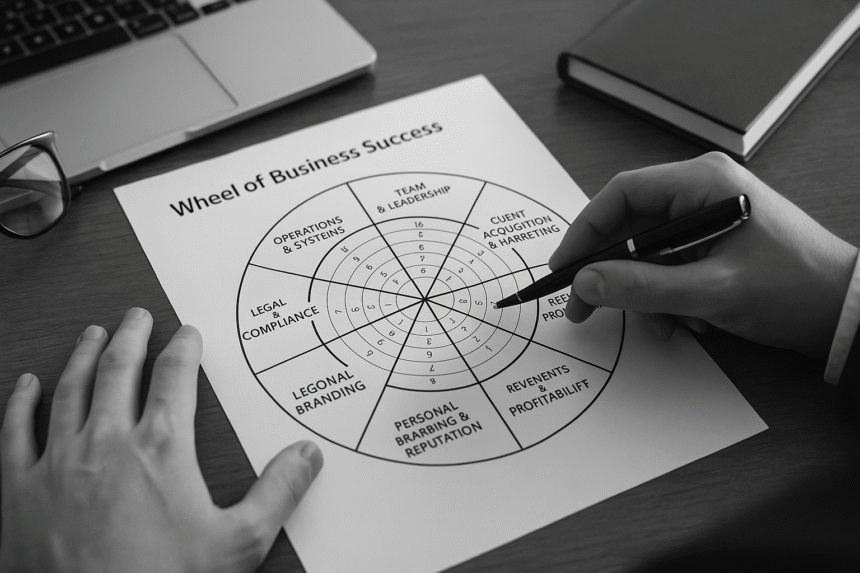Why I Replaced the ‘Wheel of Life’ With a Business Model
When I first started building my legal practice, I was told to use the “Wheel of Life” to balance my personal growth. It helped for a while, but eventually, I realized something: my success wasn’t just about life balance. It was about making my business work. So, I replaced the Wheel of Life with something more practical and aligned with my goals: the Wheel of Business Success.
In this post, I’ll walk you through what this shift looked like, why it worked, and how you can adopt a similar approach. If you’re a lawyer, consultant, or entrepreneur, this might be the business-aligned clarity tool you’ve been looking for.
What Is the “Wheel of Life” and Why I Outgrew It
The Wheel of Life is a personal development tool that helps you assess different areas of your life, like:
- Health
- Family & Friends
- Personal Growth
- Finances
- Career
- Spirituality
- Fun & Recreation
You score yourself in each category and reflect on where you’re balanced or lacking. It’s useful for general self-awareness.
But here was my problem: I didn’t just want balance. I wanted momentum. And the truth is, some areas needed intense focus while others could be maintained. For example, during a contract drafting sprint or legal negotiation season, recreation took a back seat—and that was okay.
Why I Switched to the Wheel of Business Success
As my legal practice grew, my challenges shifted. I wasn’t just managing my health or social time—I was managing operations, branding, marketing, and legal compliance. I needed a way to measure progress as a business owner, not just a person.
That’s where the Wheel of Business Success came in.
It consists of eight key areas:
- Operations & Systems
- Team & Leadership
- Client Acquisition & Marketing
- Revenue & Profitability
- Investments & Asset Building
- Personal Branding & Reputation
- Legal & Compliance
- Learning & Development
Each one reflects a core component of growing a sustainable business.
How I Apply the Business Success Wheel
Every quarter, I assess each area on a scale from 1 to 10 and ask:
- What progress have I made here?
- What bottlenecks or weaknesses are affecting this area?
- What actions will move this needle in the next 90 days?
For example:
- If Client Acquisition is a 5, I might plan a lead magnet, LinkedIn outreach strategy, or new Fiverr gig.
- If Operations is weak, I might improve my SOPs or train a virtual assistant.
- If Revenue is lagging, I check my pricing, retention, and billing efficiency.
Real-Life Benefits I Noticed
- Clarity: I no longer felt overwhelmed by vague goals. Each part of my firm had a name and a metric.
- Prioritization: When time is tight, I know where to focus.
- Delegation: If I’m strong in Legal but weak in Marketing, I know where to bring in help.
- Team Alignment: It became easier to explain priorities to collaborators.
This tool helped me shift from “doing legal work” to building a legal business.
How You Can Start Using It
- Create your wheel. Use a simple diagram or spreadsheet with the 8 categories.
- Score each area. Give a number from 1 to 10.
- Choose 2 to 3 areas to improve. Pick actions that can show measurable change in 30 to 90 days.
- Repeat every month or quarter.
Pro tip: Document your progress. I use Notion to store each review for future reflection.
Conclusion: Align Your Growth With Your Goals
The Wheel of Life helped me stay balanced in the early days. But once I stepped into the role of a legal entrepreneur, I needed something better. The Wheel of Business Success gave me the structure and strategy to move forward with clarity.
If you’re stuck between personal growth and business goals, this shift might help you too.



Leave a Reply